The MSI MEG X570 Godlike Motherboard Review: Thor's Flagship
by Gavin Bonshor on August 28, 2019 12:00 PM EST- Posted in
- Motherboards
- AMD
- MSI
- 10G Ethernet
- Ryzen
- PCIe 4.0
- Ryzen 3000
- X570
- X570 Godlike
- MEG
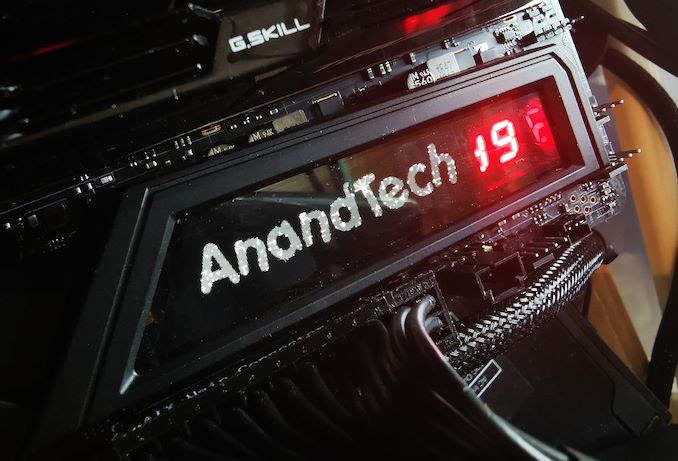
With the introduction of AMD's X570 chipset, motherboard vendors have upped its game in the premium stakes with a variety of premium mid-range and high-end models. The MEG X570 Godlike is MSI's flagship model and is heavily geared towards gamers and enthusiasts. The premium controller set of the X570 Godlike is spearheaded by Killer Networking: with dual on-board ports, Wi-Fi 6 802.11ax connectivity, and a 10 G Super LAN add-on card in the accessories bundle. Also on offer is up to five PCIe 4.0 x4 M.2 slots, two of which come from an Xpander-Z Gen4 add-on card, and a pair of Realtek ALC1220 HD audio codecs which makes this one of the most feature-rich models on the X570 chipset.
Mjolnir for X570
The MEG X570 Godlike is MSI's current flagship in its X570 line-up and represents its enthusiast gaming MEG series. Building on a similar design as the MSI MEG X570 Ace, which we have already reviewed, the X570 Godlike includes plenty of RGB options with an Infinity Mirror 2 on the rear panel cover, as well as RGB LEDs integrated into the actively cooled X570 chipset heatsink. An interesting design aspect is the customizable OLED panel to the right of the four memory slots which allows users to upload their own GIFs and animations.
There are three PCIe 4.0 x4 M.2 slots onboard with three individual M.2 heatshields, while the accessories bundle includes an M.2 Xpander-Z Gen4 PCIe 4.0 addon card which adds an additional two PCIe 4.0 x4 M.2 slots. Also included are six SATA ports with support for RAID 0, 1, and 10 arrays, while the four memory slots have support for DDR4-4800 and a total capacity of up to 128 GB.
As this is a flagship aimed at enthusiasts looking to push the Ryzen 3000 processors to its limits, cooling is important and there are a total of nine 4-pin fan headers featured around the edge of the board which are split into a single header for a CPU fan, one for a water pump, and seven for chassis fans.
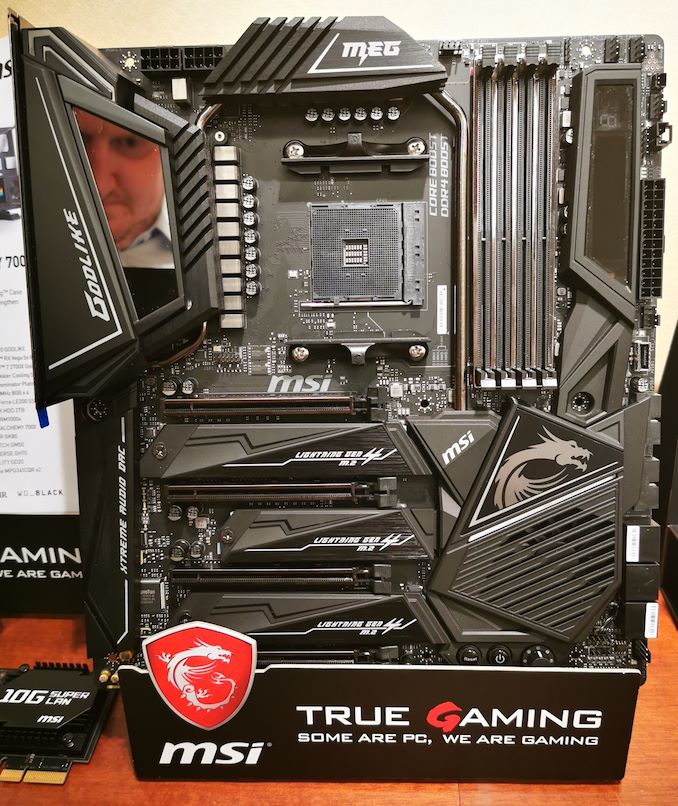
Infinity Mirror means business
Another enthusiast-level feature is a solid 14+4 phase power delivery controlled by an International Rectifier IR35201 PWM controller which operates in a 7+1 configuration. The 14-phase CPU VCore section is running with 7 x IR3599 doublers, while the 4-phase SoC section is running off a single IR3599 which splits the signal into four. This is a very capable setup with its use quality 70 A power stages throughout both sections and has already been tested on sub-zero cooling methods to great effect by some extreme overclockers. Cooling this mammoth power delivery is two large aluminium heatsinks which are interconnected by a heat pipe which also connects it to the X570 chipset heatsink.
On the lower half of the PCB is four full-length PCIe 4.0 slots, three from the CPU. These operate at x16/x0/x0/x4, x8/x0/x8/x4, and x8/x4/x4/x4, such that the fourth full-length slot is locked at PCIe 4.0 x4.
Along the bottom of the PCB is an overclockers toolkit which consists of a reset and power switch, a Game Boost overclocking profile preset dial, a pair of small buttons which allows users to overclock or downclock the base-clock in increments of 1 MHz, while a dual BIOS switch allows users to flick between two different BIOS versions; perhaps one could be set up for extreme overclocking.
MSI has included two Ethernet ports on the rear panel controlled by a Killer E3000 2.5Gbit and Killer E2600 1Gbit NIC pairing. Offering Wireless and BT 5.0 connectivity is a Killer AX1650 Wi-Fi 6 802.11ax wireless interface. Also included in the accessories bundle is an Aquantia AQC107 10 G Super Lan PCIe add-on card. Also included on the rear panel is USB 3.1 G2 connectivity with three G2 Type-A and a single Type-C G2 port, with a further two USB 3.1 G1 Type-A ports. MSI has also kitted out the MEG X570 Godlike with an impressive onboard audio solution with two Realtek ALC1220 HD audio codecs, one for the rear panel connectors, and one for the front panel. Another inclusion is an ESS 9018 Sabre DAC which powers the 6.3 mm headphone port on the rear panel. There's also a front-panel USB 3.1 G2 Type-C header, with two USB 2.0 headers which provide a total of four ports.
MSI MEG X570 Godlike Block Diagram
As expected from the number of premium controllers, the larger E-ATX form factor, and the OLED display, the MSI MEG X570 Godlike currently has the highest power draw of all the AM4 boards tested with the Ryzen 7 3700X processor so far. With both the MSI X570 Godlike and X570 Ace contending for the highest power draw, the X570 Godlike pulls over 13 W more in an idle state, and 11 W in a long idle power state. The MSI MEG X570 Godlike also has the longest POST time out of the X570 models test so far too with a default POST time of 33.9 second. In our CPU and gaming tests however, the MSI MEG X570 Godlike performed brilliantly featuring at the top of the charts across most benchmarks, albeit very marginally.
Early revisions of MSI's firmware on X570 hasn't been favorable for users looking to use the Game Boost profiles with some very questionable setting configurations; mainly too much CPU VCore which in turn, increases the heat output to dangerous levels. We have spoken to MSI and this is something they intend to fix with its next firmware update. When manually overclocking, we managed to squeeze out 4.3 GHz with a CPU VCore of 1.375; this is the brick wall for our Ryzen 7 3700X chip, and the MSI MEG X570 Godlike managed this comfortably. The performance in POV-Ray wasn't throttled as we went up each 100 MHz frequency step, and it should be noted that when overclocking on MSI's X570 models, performance isn't throttled after a certain temperature; instead, the system will shut down once CPU temperatures rise to 110ºC
The MSI MEG X570 Godlike as its name would suggest is the premier model in its line-up and as a result, is feature-laden. From its triple Killer Networking controller set, a triple-header of audio controllers, the scope for up to five PCIe 4.0 x4 M.2 slots (three onboard, two add-on), and a solid-looking 14+4 phase power delivery, the Godlike looks to be one the most comprehensive X570 motherboards on the market. Its main competition comes from the GIGABYTE X570 Aorus Xtreme ($700) and the ASUS ROG Crosshair VIII Formula ($700); both of those models also come with unique features, but the MSI MEG X570 Godlike ($700) does have four full-length PCIe 4.0 slots, capability for up to five PCIe 4.0 x4 M.2 drives out of the box, and also has plenty to offer users in aesthetics with the Mystic Light Infinity Mirror 2, and the customizable OLED panel.


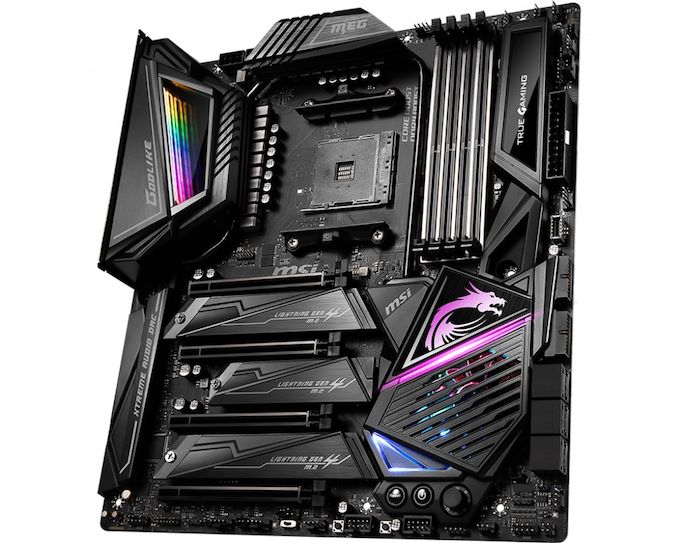



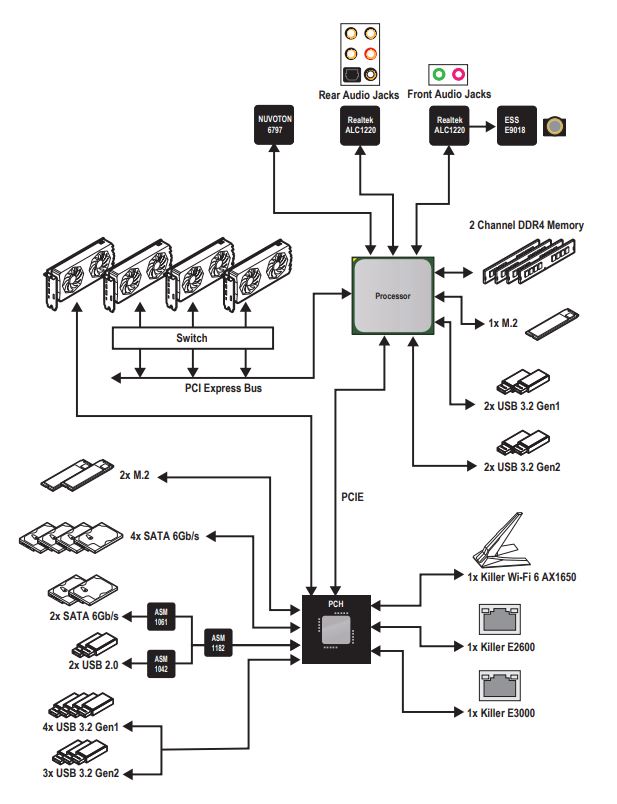
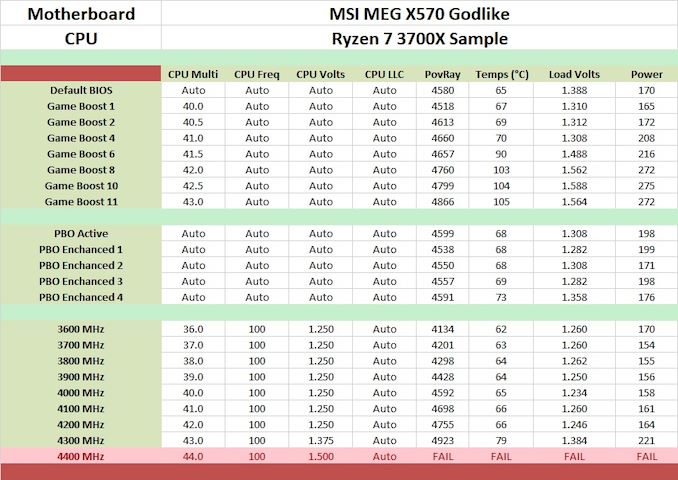








116 Comments
View All Comments
inighthawki - Saturday, August 31, 2019 - link
If your monitor cannot display more than 75hz, then having a framerate about 75hz cannot make it any smoother. The display will scan out one image every 13.3ms, no more, no less. However, rendering above 75hz can make it feel more *responsive* because the image being scanned out can be more recent. This is due to the reduced latency. Perhaps you are confusing the two concepts? Otherwise if it appears smoother it could just be the game itself causing enough single frame stuttering (while maintaining and average greater than 75) that makes things less noticeable at higher framerates.>> but as you mentioned.. could be cause of the games i play, dont need it.. i assume, then, you play a lot of 1st person shooters ?
Yes I do. Other games are not as noticeable - many I can play perfectly fine at 60fps without an issue. However fast paced games like Overwatch are very difficult for me at anything under 144. My goal is to also switch to the 240hz panels once the 1440p panels are available.
Peter2k - Thursday, August 29, 2019 - link
Just because 1 in a million gamers would play at 720p at all, especially after forking over major cash, does not mean its a realistic scenarioinighthawki - Thursday, August 29, 2019 - link
My point wasn't that his scenario was realistic. He's suggesting that the only time this would be an issue (i.e when the CPU would be a bottleneck) is if you bought a mediocre CPU and spent a ton on the GPU, to which I said, is not true. Many games benefit heavily from single threaded performance on even the highest end CPUs when you're trying to hit very high framerates.It's great if the people here like to play at 4K ultra settings and get 60fps but there are a lot of people who prefer framerate over quality. Hitting 144hz or 240hz on the lowest settings in many titles is quite taxing on the CPU.
Qasar - Friday, August 30, 2019 - link
" Many games benefit heavily from single threaded performance on even the highest end CPUs " and that performance, is tied to the cpu's IPC, so the frequency a cpu can get.. isnt the be all tell all of performance. " but there are a lot of people who prefer framerate over quality " and there are also a lot of people that prefer quality over frame rate, point is ?inighthawki - Friday, August 30, 2019 - link
Performance is based on IPC and frequency, not just IPC. A CPU that already has a higher base IPC *and* can overclocking the frequency much more has a huge advantage in single threaded performance scenarios.>> and there are also a lot of people that prefer quality over frame rate, point is ?
I never said those people are wrong. I've been being told throughout this discussion that my decisions are stupid or wrong because it's what I care about. If people prefer the quality then more power to them, I'm happy they're getting what they want.
Qasar - Friday, August 30, 2019 - link
" A CPU that already has a higher base IPC *and* can overclocking the frequency much more has a huge advantage in single threaded performance scenarios. " then explain why Zen 2, while clocked 600 mhz slower is with in a few % of the intel equivalent. which is because Zen does more instructions per clock, then intel does at the moment. again.. the frequency a cpu can get, isnt the tell all, be all when it comes to performance.. look at the P4 and A64 days.if Zen 2 were to clock higher, then its quite possible, the performance would be in amds favor across the board.
inighthawki - Saturday, August 31, 2019 - link
Youre misunderstanding what I'm saying. I didn't say "greater frequency == greater performance". You should go back and re-read my posts.Qasar - Saturday, August 31, 2019 - link
thats how it sounds, cause thats how you seem to have worded it.. to get higher IPC, the freq the cpu runs at, also has to go up.. but thats not necessarily the case, and with Zen2, it does more work per clock, compared to intel, which is is while clocked slower, the performance is close enough, its not worth the extra cash that intel charges, in the case of the 9900K vs 3800X the price difference is a $150 difference, personally, id rather save that 150, and put it towards a better vid card, or something else, or get the 3900X for the same price as the 9900k. its also probably a safe bet, that if Zen 2 could reach the same clocks as the intel equivalent, then the question is, based on performance and price, why buy an intel cpuinighthawki - Saturday, August 31, 2019 - link
>> the performance is close enough, its not worth the extra cash that intel chargesAnd that's where we seem to disagree. The performance is not close enough. If we were talking a completely negligible give and take scenarios of 1-2fps that would be one thing. But many gaming benchmarks show the 9900K still having a 5 if not 10% upper hand in gaming scenarios. When my goal is hitting 144 or even 240fps in games, that is definitely not performance I'm willing to let go.
I'm not calling Zen2 a bad CPU lineup. The 3900X is a fantastic chip and meets the requirements of many people. Just not me. I don't need core count, I need maximum single threaded performance. I don't care about the dollar per clock per watt or anything like that.
Qasar - Saturday, August 31, 2019 - link
yep, then thats where we disagree... but that 5 or 10%. IMO.. isnt worth the price of the 9900K cause just the cpu alone is 150 bucks.. AND you NEED a mid high to high end cooler for that 9900K to reach those clocks, and sustain them add another $75 + to that, if the $200 premium is important to you, then by all means.. for me.. no thanks..